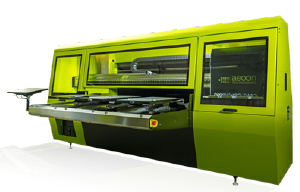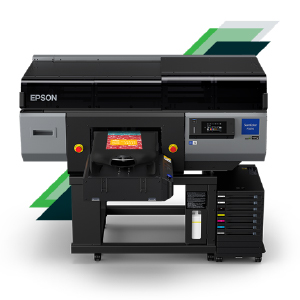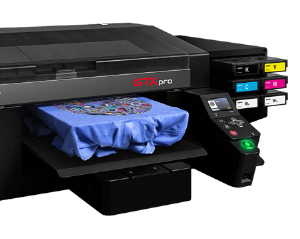When you work with contract decorators across the US, you quickly see that they all have different brands of DTG machines. And yet the same thing always comes up — no matter the brand, maintenance upkeep on the machine is a must!
 Call it TLC for the printer — this extends the life of the printer, also ensuring that it does its work efficiently and trouble-free.
Call it TLC for the printer — this extends the life of the printer, also ensuring that it does its work efficiently and trouble-free.
Once you buy and bring in a new DTG printer, you must find the best place for this printer in your shop. Make sure to place your printer in a clean, temperature-controlled space.
Most importantly, make sure the printer is plugged into a high-end surge protector. All the maintenance in the world will not help if a lighting strike or other power surges happen.
Humidity can affect both your digital printer and the print head. Make sure you have a hygrometer in the same location as the DTG machine in the shop — the desired humidity range is 40% to 80%. A humidifier or dehumidifier will help you adjust the room’s humidity and keep the room at the desired range.
 Make a regular routine of maintenance after running the machine during the day. Take 5 minutes to set up a cleaning routine:
Make a regular routine of maintenance after running the machine during the day. Take 5 minutes to set up a cleaning routine:
- Use a gentle liquid, like Formula 409 or isopropyl alcohol, and a paper towel to wipe the outside of the machine.
- Use the specialty swabs that come with the machine to gently clean the inside. You do not want to use a regular Q-tip that can leave debris behind and clog up the machine.
- Make sure to check the rubber gasket on the capping assembly, where ink can build up and lead to clogging.
- Wipe away an excess ink from the slopped areas to either side of the print head. Do not touch the print head itself.
- Lastly, make sure that the wiper of the capping assembly is kept clean and remains flexible. The wiper wipes the bottom of the print head. Check the wiper heads if they start to feel stiff and rough replace it with new wiper head.
 Some decorators have taken the next step to have extra parts for their DTG printers on-hand, so if the machine goes down it is not out of commission for weeks, waiting for a part to be delivered. They reach out to the manufacturer and work on it in advance over the phone, so they do not lose the capacity from that machine. It might be down for a day but not for a week or more!
Some decorators have taken the next step to have extra parts for their DTG printers on-hand, so if the machine goes down it is not out of commission for weeks, waiting for a part to be delivered. They reach out to the manufacturer and work on it in advance over the phone, so they do not lose the capacity from that machine. It might be down for a day but not for a week or more!
Stay on track with your maintenance schedule. Keeping a log and taking note of which tasks you performed will help you or another team remember what tasks need to be done daily. The log will be a great tool for potential buyers if you sell the machine too — you’ll have a better chance of getting a higher price for the machine from the buyer by showing the log of the maintenance schedule on the machine.
